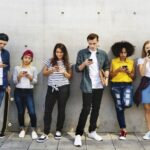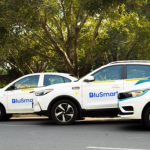
how it and communication technology needs to be warned about possible hr violations
Last updated on May 11th, 2022 at 06:28 am
At BSR, a study conducted in tandem with the Information and Communication Technology sector has stated the potential risks to human rights as our needs and consumption of information is changing.
Artificial Intelligence and Big Data Analytics:
While these tools are making life easy and decisions predictable, they also run the risk of running our lives for us. However, a variety of new risks emerge with their use, such as automated systems making discriminatory decisions (such as in housing, credit, employment, and health), the automation of jobs impacting labor rights by reducing demand for certain skills, or the misuse of personal data.
Internet of Things (IoT):
This is another technology which can threaten human rights to a large extend. The challenges faced would be about willful or unwilful extraction of information from citizens for data use, or the need to establish privacy protocols for who has access to data, who controls data, and how data is used. These challenges form an important new social license to operate—without public trust, the internet of Things is much less likely to become a commercial success.
Encryption:
It was provided to create a sense of security to information and data. But tight compartmentalized data is going to create the need to get around it, eventually. It could create problem in fighting crime to a large extend too.
Access to Information:
Today, access is easy and at the click of a button. But governments are gradually wanting to control this and this could create a problem for genuine public opinion to be formed.
Related Posts
Law Enforcement Relationships:
Companies face the risk that law enforcement agencies themselves violate human rights, such as when surveillance powers are misused, overbroad requests for data or content restrictions are made, or governments make use of hacking techniques without proper approvals.
Child Rights:
These little individuals need as much respect as any grown up. Therefore, IT companies need to develop frameworks that will incorporate children’s rights to privacy, freedom of expression, information, education, and non-discrimination and consider how to engage with children as rights holders.
Non-Discriminatory:
Minorities must not get missed out, when it comes to hiring, worker rights, labor intensive work and equal pay, etc.
Raw Material Sourcing:
This can lead to exploitation of labor at the lowest level.We remember the classic case of Nestle and cocoa sourcing through child labor in Ghana.
Forced & Bonded Labor:
t has become clear that the manufacture and distribution of technology hardware can involve forms of bonded and forced labor—for example, where fees are charged to workers during their recruitment or where passports and other forms of identification are withheld.












